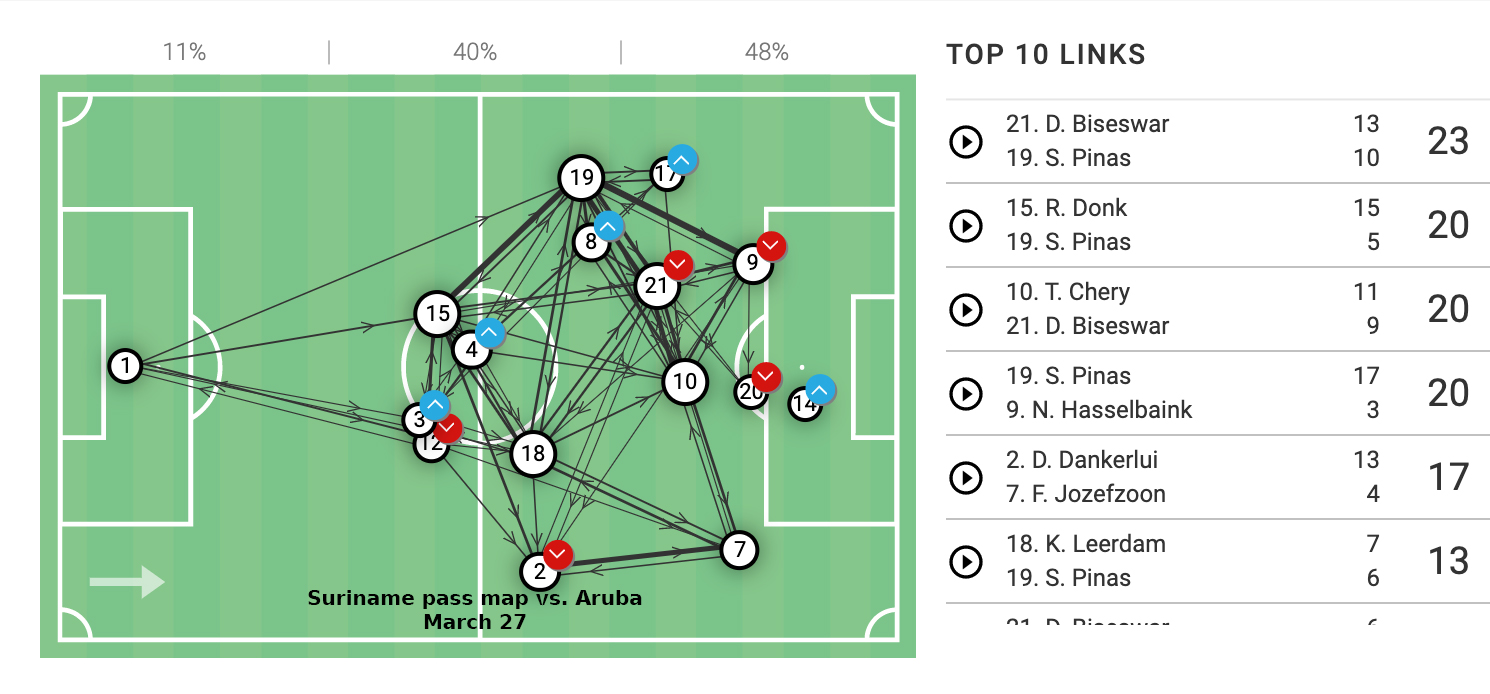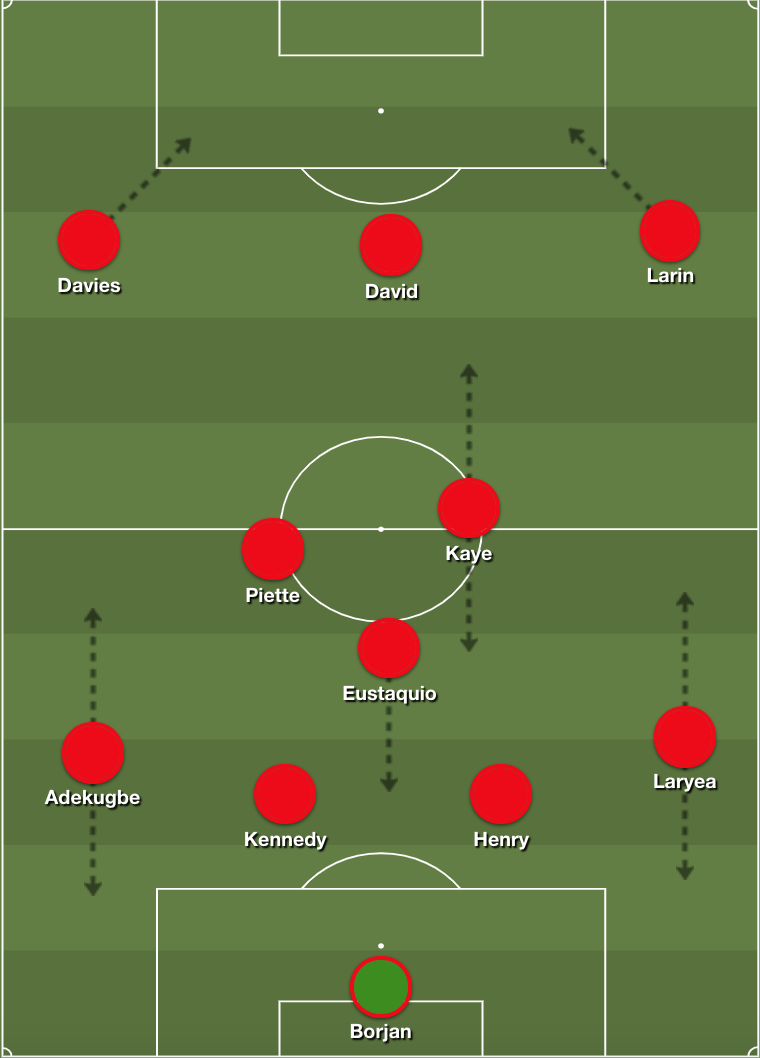Saturday marks the start of a busy June window for the Canadian men's national team.
Les Rouges close out their first-round World Cup qualifiers against Aruba this Saturday in Bradenton, Fla., before travelling to Chicago to face a new-look Suriname in their final game in Group B. Should Canada top its group, that sets up a two-legged second-round matchup with the winner of Group E, likely Haiti, to see who'll qualify for the octagonal phase in Concacaf qualifying against the likes of Mexico, the U.S. and Costa Rica.
With a crucial two-week period on the horizon, here's an in-depth primer on Canada's final opening-round World Cup qualifiers.
Who was called up?
Coach John Herdman named 24 players to the June squad, including six changes to the March roster.
Canada announces squad for FIFA World Cup Qatar 2022™ Qualifiers in June
#CANMNT https://t.co/VjJrIKYnbX pic.twitter.com/G5KbXCwCDB— Canada Soccer (@CanadaSoccerEN) May 29, 2021
Centre back Scott Kennedy, fresh off an impressive debut season in the 2. Bundesliga with Jahn Regensburg, earned his first call-up and is a potential starter for these qualifiers.
There were 11 additional call-ups made to spar with the national team in training ahead of the Aruba match. If necessary, any of those players can be brought in as injury replacements.
The list includes a pair of uncommitted dual nationals in Luke Singh and Ayo Akinola. Singh could be cap tied by the end of this window, as he was included in Trinidad and Tobago's World Cup qualifying squad. However, Akinola – who can also represent the U.S. or Nigeria – is still mulling his international future. Perhaps this camp could sway his decision.
What did you mean by "new-look Suriname?"
Like many Concacaf nations, Suriname has been able to recruit several dual nationals to its squad over the last three months.
In March alone, seven dual nationals were handed their first caps, many of whom have years of experience in the Eredivisie. Another five have been added to the June squad.
"They're a completely different team now," said John Herdman on his Zoom call with reporters following the squad announcement. "They are a top-six, top-eight team in Concacaf in terms of the quality of players. I don't think anyone had predicted that in nine months, they'd have 15 new players, all who've played at the highest levels in the [Dutch] Eredivisie.
"I think with [Suriname] it's not about where they're at now, it's where they've been as players," Herdman said. "I don't really want to really use the word 'journeymen' so I'm going to use 'experienced guys' who've seen a lot in football, so that brings a new and exciting challenge to the group."
However, 11 of the 23 call-ups are aged 30 or older, and they've had little time to train or play competitive matches together, so chemistry will be an issue.
In addition, the strength of Suriname's squad is in the defence, captained by Galatasaray's Ryan Donk. Even the two most-involved players in possession were wingbacks in Damil Dankerlui and Kelvin Leerdam, as noted in the pass maps below.
The thicker the line, the more passes attempted between the two players. Dankerlui (No. 2) and Leerdam (No. 18) were also among Suriname's leaders in passes to the final third in the team's last two qualifiers.


In fact, the majority of Suriname's generated chances in open play during their March qualifiers versus the Cayman Islands and Aruba were created via the flanks. It was especially noticeable in the latter match with most of the team's expected goals (xG) coming from the right.

Despite that strength on the wings and lining up in a 3-5-2 in that first game versus the Cayman Islands, Suriname formed a 4-2-3-1 in possession (seen in the pass maps above). That led to that system becoming the preferred formation against Aruba a few days later.
Of Suriname's nine goals scored so far, six were via crosses or set pieces. This has been a weakness in Canada's defence, specifically in the 4-1 loss to the United States in November 2019.
It's imperative for Canada to be mindful of those transitions down the flanks, especially after it stung them in the 2019 Gold Cup quarterfinals against Haiti. Herdman must also be wary of the midfield, too, as Suriname will likely start three central players, so both traits could impact the Canadians' selection.
"[Media] have said it, the fans have said it, if we want to compete in 2022... We've got to test ourselves," Herdman stated. "We've got to be tested. That defence has got to be really tested. That front five has got to be able to support that defence to ensure that we can grind out those clean sheets in big games."
Who will start for Canada?
There's an equal chance of John Herdman starting with a 4-4-2, as seen in the first qualifier against Bermuda in March, or in the familiar 4-3-3 setup.
Given Suriname will likely start with three midfielders and Canada's potential new-look centre-back partnership, a 4-3-3 would be the ideal formation, and the lineup should look like something below.

This not only provides balance in the midfield, it also protects the flanks. Samuel Piette can cover for Sam Adekugbe when necessary – ditto for Mark-Anthony Kaye with Richie Laryea. Piette is a solid defensive shield, while Eustaquio and Kaye are ball-progressing machines, as noted in their statistical radars below.
Mark-Anthony Kaye, #LAFC
*Insert Peter Griffin sliding off couch GIF* pic.twitter.com/KXJ5UMrONN— Peter Galindo (@GalindoPW) October 27, 2020

This is also ideal for Canada's previous issues when defending in transition. There was a notable shift to a 3-4-3 in possession in March, although this tweak is especially helpful if an opponent tries to counter.
There are two ways to form this 3-4-3. The first is to have Adekugbe tuck inside to form the back three, have Alphonso Davies move to the left of the midfield four with Richie Laryea pushing up on the right, then Mark-Anthony Kaye becomes the de-facto No. 10 behind Jonathan David and Cyle Larin.

This ensures there are at least three defenders and two midfielders staying deeper for protection in transition. That should help shut down Suriname's rapid counter-attacks.
The top concern entering this window is at centre back. Steven Vitoria and Doneil Henry are the only central defenders who've started competitive matches together – one of the two games was the 4-1 loss to the U.S. in November 2019 – so it's possible that a new partnership could debut in this window.
"I'd like to be able to say I've got a [Terry] Butcher and [Tony] Adams or a [Fabio] Cannavaro and [Paolo] Maldini," said Herdman when asked if there's concern about the centre backs. "But this is where we're at. We're at a stage where I believe in the men we've selected."
This is why a combo of Henry and Kennedy makes the most sense. Kennedy is a left-footer, has good pace, is comfortable playing in a high line and is excellent when defending in transition. Henry is equally quick, but he has experience and is fairly adept on the ball. He's certainly more rambunctious, but that's where Kennedy's anticipation can mask that, along with Canada's tactical setup to ensure no defender is easily exploited on the break.

